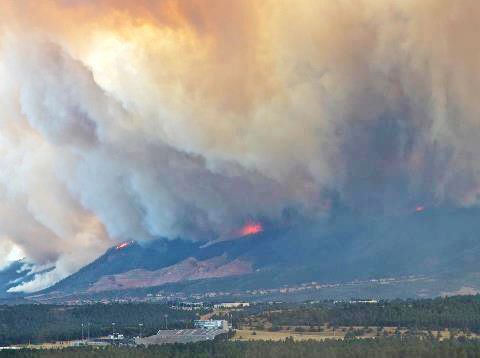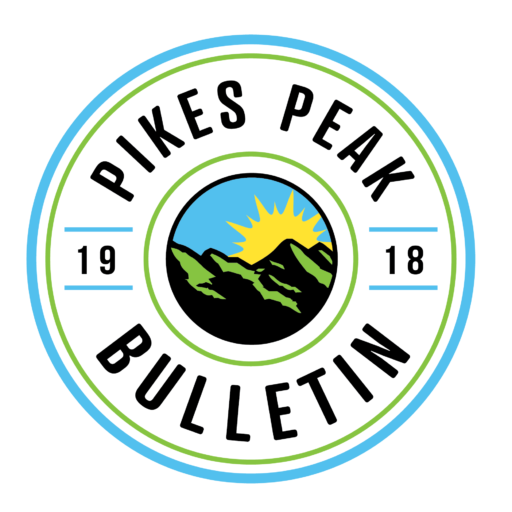
Watching media reports of the tragic California fires, it all seemed so familiar. The wind-driven fire started slowly in dryland forests adjacent to comfortable and long-settled communities and suddenly exploded into an unquenchable firestorm. Residents had to leave – and leave right now! They had minutes, not hours or days. To dawdle was to die.
In June of 2012, I was a journalist covering local politics for the Colorado Springs Business Journal. Westside residents were concerned about a forest fire burning in the Pike National Forest west of residential neighborhoods north of 30th Street. It seemed unlikely that the fire would jump to Colorado Springs, but Mayor Steve Bach went to see things for himself, and the media followed.
Smoke from the fire filled the western sky, but there was no visible fire. Bach was optimistic, noting that multiple fire departments were either engaging the fire or preparing for the worst. And suddenly in the midst of his remarks the fire jumped the ridge from Queens Canyon, directly threatening several neighborhoods. He was facing east as he spoke, but quickly turned around, gasped and headed back downtown to prepare for the worst. As it happened, the worst was both unanticipated and unimaginable.
June 26, 2012: a day that will live in infamy. The temperature reached 101 degrees and driven by winds created by an immense pyrocumulus cloud, fiery embers rained down on multiple west and northwest neighborhoods. By the time that firefighters were able to halt the blazes, 346 Colorado Springs homes had been destroyed and many others damaged and two people lost their lives.
Can the fire be quenched in time, or will this fire eclipse all of its predecessors?
Almost 13 years later, little remains to remind us of that awful day of the Waldo Canyon fire. The burned-out homes have been rebuilt or replaced, the charred mountainside has new growth and restored Westside businesses once again thrive.
And right now, we who live close to the mountains feel more safe and secure. Thanks to decades of making forests more resilient, catastrophic forest fires are increasingly less likely than they would be without that fire mitigation work. But that doesn’t mean they’re impossible – so here’s a worst-case scenario:
Late June, and the temperature has exceeded 100 degrees for five straight days. Forest fires rage near Cripple Creek and Victor, and many regional fire departments are there to help their neighbors. On a windy morning, a fire ignites near the top of the Manitou Incline and quickly intensifies. Within minutes, a firestorm hurtles down the mountain, putting Manitou Springs and the entire historic Westside in danger.
Can the fire be quenched in time, or will this fire eclipse all of its predecessors? That’s not something I want to think about – but I’m glad there are smart people who are thinking about it and working to make sure we are as ready as we can be for whatever conditions Mother Nature throws at us.
For the moment, I’ll look out the window on a cold, sunny Westside morning and be grateful that another day has dawned without fire – and even though it will mean a greater risk of fire, I’m still yearning for summer!

